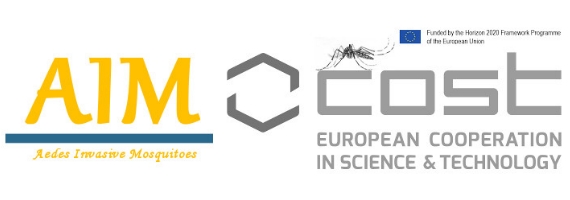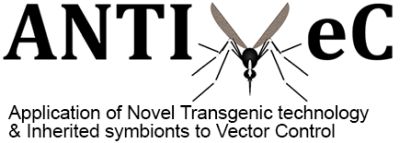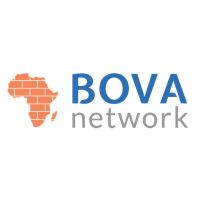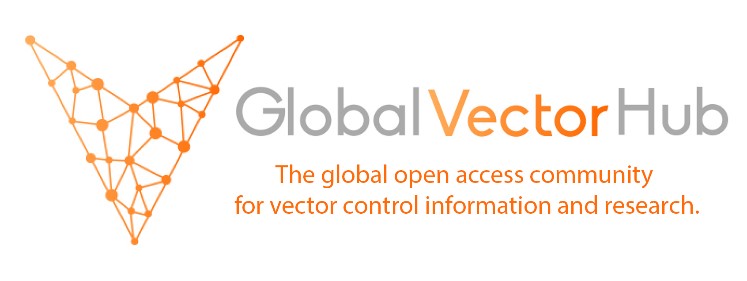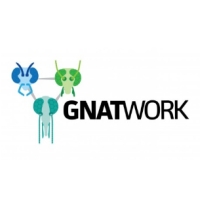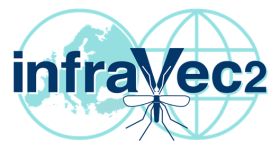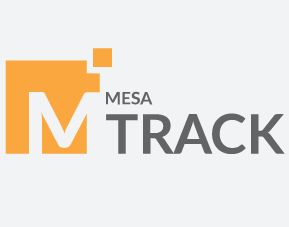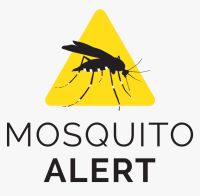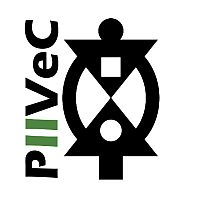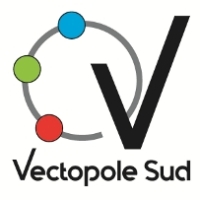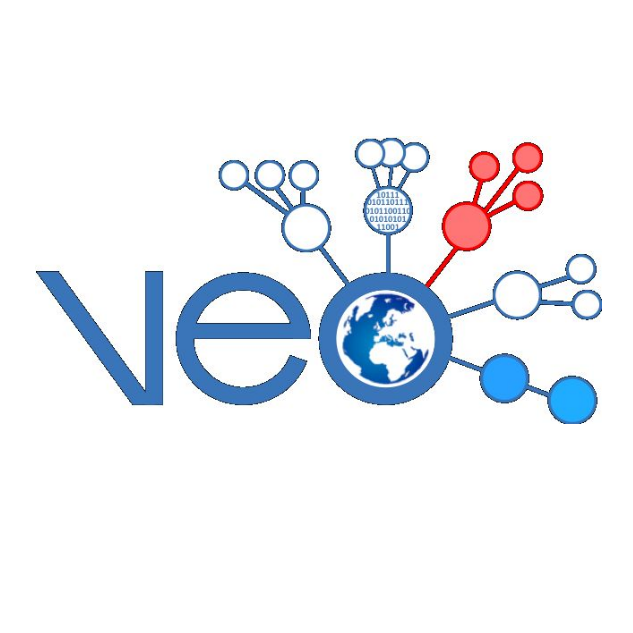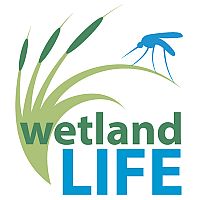NETWORKING FOR VECTOR CONTROL
Aedes Invasive Mosquito (AIM) COST ACTION
Developing best practice guidelines and protocols on Aedes invasive mosquito surveillance, control, and spatial analysis practices ensuring consistency across Europe. Resources for training schools, short-term missions and knowledge sharing are here available prior submission of a short proposal.
Keywords: Cost Action, invasive mosquito, vector, Flavivirus, surveillance, control, Aedes, Spatial modelling, guidelines, harmonisation, dissemination, integration.
Learn more...
Full title: AIM COST ACTION
Project description: The Aedes Invasive Mosquito Cost Action will assess and review current invasive mosquito surveillance, control and analysis practices, develop best practice guidelines and protocols ensuring consistency across Europe. It will facilitate development of new tools and identify priority research topics. Recommendations to standardise and streamline entomological and spatial analysis will promote enhanced risk assessments needed for reliable targeting and planning.
Coordinating Institution/person: Università La Sapienza (Roma), Alessandra della Torre
Project duration: Four years starting in November 2018
Funding source and total amount: EU COST ACTION PROGRAMME (European Cooperation in Science & Technology), approximately €600,000
Disease and/or vector(s) “group” involved: Aedes and other invasive mosquitoes. Chikungunya, Dengue, Zika, Yellow fever
Geographic scopes of the project: Primarily Europe and neighbouring countries in Western Asia and North Africa
Number of countries involved in the project: At least 31
Scientific impact: Development of research synergies and definition of new research priorities in Vector Borne Diseases (VBD) field by integration of west/east-European and neighbour country (NNC) research communities with a common interest on Aedes invasive Mosquitoes (AIM) bionomics in temperate areas, but little/no history of collaboration. Transfer of knowledge from countries and research groups with experience of established AIM populations and autochthonous disease transmission to those without such experience. Establishment of a new generation of highly-qualified scientists trained to deal with invasive vectors & vector borne diseases beyond country boundaries.
Technological impact: Optimisation/standardization of AIM surveillance/control approaches across Europe and beyond by integration of west-/east-European and NNC research/PH communities with a common interest but with little/no history of collaboration. Development/ optimization of more affordable tools, methodologies and approaches in invasive vector and disease surveillance/control also through citizen science programmes which could be effectively implemented also in lower-income countries, by critical review of shared data. Translation of surveillance and control research and analyses into actual products/methodologies by means of the promotion of links between research groups, public health professionals, citizen scientists and private companies in the sector.
Contact: William Wint
ANTI-VeC
Keywords: genetic, vector endosymbionts, transgenic, population suppression, vector control
Learn more...
Full title: “Application of Novel Transgenic technology & Inherited symbionts to Vector Control”, ANTI-VeC
Project description: ANTI-VeC focuses on two highly promising novel approaches: the use of genetic modification and of heritable endosymbionts, with the aim of suppressing vector populations or blocking their transmission of pathogens. It offers pump-priming funding, knowledge exchange, methodological and technological sharing, and stimulates innovative collaborative research projects that will lay the foundation for new approaches or more effective implementation.
The coordinating Institution/person: University of Glasgow (Prof Steve Sinkins; Michelle Connolly), Imperial College London (Prof Andrea Crisanti).
Duration of the project: July 2017 – 2 July 2020.
Funding source and total amount: Application of Novel Transgenic technology & Inherited symbionts to Vector Control (BB/R005338/1) is one of four Global Challenges Research Fund (GCRF) Networks in Vector Borne Disease Research that are co-funded by the Biotechnology and Biological Sciences Research Council (BBSRC), Medical Research Council (MRC) and Natural Environment Research Council (NERC). The total research council contribution is £1,775,424.
Disease and/or vector(s) “group” involved: Malaria, Dengue, Zika, African Trypanosomiasis and other vector-borne disease. Invasive mosquito and fly species including Anopheles, Tsetse and Sandflies.
Geographic scopes of the project (geographical area involved, area(s) of study): Global network and funding is aimed at fostering partnerships between UK and DAC-list countries.
Number of countries involved in the project: ANTI-VeC is based in the UK (Glasgow/Imperial) and has members from 31 countries globally.
Which is the “benefit” for the scientific community? The Network is of direct benefit to the large community of researchers in the UK and disease-endemic countries already working in this field, from a variety of disciplines. In calling for, assessing and funding promising pump-priming research projects, it will stimulate new ideas, new lines of research and new collaborations which might be difficult to fund without supporting preliminary data. It will facilitate exchange of reagents and provide funding for early career researchers to acquire new skills during training visits between labs, international conference bursaries, and travel bursaries to attend Network meetings. It will provide through its annual meetings, regional meetings and website, a forum for exchange of information and collaboration. It is also useful to the wider community in other developed countries, as well as others not currently working in the field. Through network membership, new collaborations may be formed, and access to resources and meetings will be available.
Contact: anti-vec-network@glasgow.ac.uk
BOVA network
Keywords: Vector borne diseases, built environment, peri-urban environment, multi-sectoral, research, advocacy
Learn more...
Full title: BOVA network
Project description: Building out vector-borne diseases in sub-Saharan Africa: an interdisciplinary network focusing on preventing vector-borne diseases through improving the built environment.
Coordinating Institution/person: Fiona Shenton Network Facilitator based at Durham University, UK
Project duration: Ends June 30, 2020
Funding source and total amount: Global Challenges Research Fund (GCRF) and Medical Research Council (MRC) both UK
Disease and/or vector(s) “group” involved: Diseases like malaria, leishmaniasis, lymphatic filariasis, dengue and others, transmitted by mosquitoes, sand flies, tetse flies etc.
Geographic scopes of the project: Sub-Saharan Africa
Number of countries involved in the project: More than 20
Scientific impact: Improvement of the built environment can play a role in controlling vector-borne diseases, for example by screening doors and windows and preventing accumulation of standing water around the home. However, vector-borne disease experts and epidemiologists remain largely divorced from architects, urban planners, development experts, industry, local stakeholders and decision-makers in endemic countries. Our main goal is therefore to make these linkages and stimulate inter-sectoral collaboration by forming an interdisciplinary network of stakeholders with an interest in reducing vector-borne diseases through improving the built environment.
Contact: bova.network@durham.ac.uk

Entomology Resource Exchange Network (EREN)
Learn more...
Full title: Entomology Resource Exchange Network (EREN)
Project description: The EREN platform will provide technical and programmatic guidance for entomology and vector control across the Asia Pacific, and facilitate inter-country information exchange. It will serve as a space where National Malaria Control Programmes (NMCP) and partner organisations can access and utilise key technical data and information, and share experiences with different VC methodologies and tools and best practices, as well as reflect on shared challenges and locally adapted solutions to guide malaria elimination efforts.
Coordinating Institution/person: Miss Tiff Dahmash, APMEN VCWG, Thailand/UK
Project duration: Due to be launched April 2019
Funding source and total amount: Sumitomo/BMGF
Disease and/or vector(s) “group” involved: Primarily Asia Pacific Malaria Elimination Network Vector Control Working Group (APMEN VCWG), University of California Global Health Group (UCSF)
Geographic scopes of the project: Asia Pacific (https://www.apmen.org/)
Number of countries involved in the project: 18 core countries and 10-15 partners
Scientific impact: As the first country-led technical platform for entomology/vector control specifically focused on the Asia Pacific, the EREN aims to collate, share, and harmonise programmatic and research operations within each APMEN country to facilitate a south-south/peer-to-peer learning network, as well as identify and build programme capacity across key entomological challenges being faced by NMCP and partners. Expertise within the region and across the wider scientific community will be drawn upon and showcased to exemplify current best practices and innovative approaches for VC/entomology, as well as active cross-country discussion forums developed for interactive learning and building of a mutual support network.
European Society for Vector Ecology (E-SOVE)
Keywords: Arthropod vectors, vector borne diseases, vector ecology, vector control, genomics, networking, public education & outreach
Learn more...
Full title: European Society for Vector Ecology (E-SOVE)
Project description: The Society is committed to solving many complex problems encountered in the field of vector biology and control. Among these are the suppression of nuisance organisms and disease vectors through integration of control elements, such as environ-mental management, biological control, public education, and appropriate chemical control technology.
Coordinating Institution/person: The Executive Director (Major Dhillon) in collaboration with the Director of the European Branch (Alexandra Chaskopoulou)
Duration of the project: Since 1986
Funding source and total amount: Membership fees, Publication page charges, donations
Disease and/or vector(s) “group” involved: Arthropod vectors including but not limited to mosquitoes, sandflies, ticks, Culicoides.
Geographic scopes of the project: It is an international/global society
Number of countries involved in the project: The society has more than 600 members from 50 countries. Approximately, 150 members are from European institutions.
Benefit for the scientific community: E-SOVE brings together scientists from the field of vector ecology and control, in order to share current research development, enhance networking and increase visibility of everyone’s accomplishments. Among the main tasks of the E-SOVE are the biennial conferences in Europe. The Society publishes the Journal of Vector Ecology biannually containing research and operational papers covering various topics in vector ecology, biology, genomics and control. SOVE also publishes a newsletter every quarter which is available online to all the SOVE members.
Contact: infoesove@gmail.com
Global Vector Hub (GVH)
Keywords: vector biology & control, epidemiology, research community network, capacity building, training & education, research tools, vector control guidelines, data sharing
Learn more...
Full title: “The Global Vector Hub (GVH)”
Project description: : The Global Vector Hub (GVH) is a community-led, online, open-access resource to provide comprehensive information on vector control and vector biology. This includes geo-tagged entomological and epidemiological data, a searchable registry and worldwide network of vector researchers and vector controllers, a database of training and educational materials, vector control guidelines and research tools. The objectives of the GVH are to establish a community of practice and to build capacity, provide training and educational materials, deliver a platform for sharing data and create a multisectoral network of individuals, departments and programmes working on research or operational control of vector-borne diseases.
Coordinating Institution/person: The London School of Hygiene & Tropical Medicine/Prof James Logan (PI).
Project duration: 2018-2022
Funding source and total amount: The Global Vector Hub has received funding from the European Union’s Horizon 2020 research and innovation programme under grant agreement No 734584, and from the BBSRC’s Bioinformatics and Biological Resources Fund.
Disease and/or vector(s) “group” involved: The first phase will focus on Aedes mosquitoes; this will later be expanded to other vector groups (please see below).
Geographic scopes of the project: The GVH is being developed in phases. Along with each phased development and launch, a process of data gathering, information and training material collection, network building, dissemination pushes, and evaluation will take place. Phase 1 will involve a Latin American focus on Aedes-borne arboviruses, Phase 2 will involve an arbovirus focus globally, Phase 3 will focus on Anopheles vectors and malaria globally, Phase 4 will include other mosquito-borne diseases globally, and Phase 5 will include all other vectors globally.
Number of countries involved in the project: Phase 1 will initially start with Latin America; other countries to be included as appropriate. As described above, the geographic scope of the project will expand globally at later phases.
Scientific community benefit: The GVH aims to equip the world’s vector-borne disease community with the right skills, education, expertise and information to be better prepared to respond to vector-borne diseases. It intends to inform, educate and empower vector control researchers and programmes for collation and interpretation of high-quality data to aid evidence-based decision-making.
Contact: Frederik Seelig
Gnatwork
Keywords: animal health, human health, food security, vector system, vector ecology, vector-borne disease, crop pests, quarantine pest, containment, technical platform, biocide evaluation, insecticide resistance, genomics, taxonomy.
Learn more...
Full title: Gnatwork
Project description: The Gnatwork project brings together workers on blackflies, sandflies and biting midges from around the world to address technical issues that arise when working on small biting flies. Through pump-prime funding of small-scale, collaborative studies and hosting of annual training workshops, we aim to create a more resilient research base for these three neglected vector groups.
Coordinating Institution/person: The Pirbright Institute (Dr Simon Carpenter, Dr. Emma Howson, Alix Connelly), LSHTM (Prof. Mary Cameroon).
Duration of the project: Three years (July 2017-July 2020)
Funding source and total amount: The Gnatwork (BB/R005362/1) is one of four Global Challenges Research Fund (GCRF) Networks in vector-borne disease research that are co-funded by The Biotechnology and Biological Sciences Research Council (BBSRC), Medical Research Council (MRC) and Natural Environment Research Council (NERC). The total funding budget of the Gnatwork is approx. £1.1m, with the following available for Gnatwork members: i) Our pump-prime funding calls have a total budget of £600 000, with a maximum cap of £100 000 for a single project (smaller scale projects are encouraged), ii) Each international workshops (Brazil and Bangladesh) has a travel bursary fund of £10 500 (30 travel bursaries of up to £350 each).
Disease and/or vector(s) “group” involved: The Gnatwork focuses on three groups of small biting flies: blackflies (Simuliidae), sandflies (Psychodidae) and biting midges (Ceratopogonidae).
Geographic scopes of the project: Gnatwork is a global network, with membership available to all. Funding is primarily aimed at supporting and developing researchers working on blackflies, sandflies and biting midges in the UK and in countries receiving official development assistance (ODA). For pump-prime funding, co-investigators from other countries that do not receive ODA are also welcome.
Number of countries involved in the project: The Gnatwork is based in the UK at The Pirbright Institute and LSHTM; currently members from 42 countries worldwide; international workshops will be held in Bangladesh and Brazil and a final meeting in the UK.
Scientific community benefit: The provision of funding for collaborative studies and training for early-career scientists will help to bridge gaps between biting midge, blackfly and sandfly researchers, providing a stronger research base for these vector groups. Furthermore, our website and monthly newsletters offer a platform for early-career researchers to build an online presence, increasing their profile within the vector community.
Contact: enquiries@gnatwork.ac.uk
Infravec2
Keywords: NO COST products, vector-borne diseases, capacity building, stakeholders, arthropod vectors, networking, standard operating procedures, sharing platforms, training courses.
Learn more...
Full title: Research Infrastructures for the Control of Vector-borne Diseases (Infravec2)
Project description: Infravec2 provides NO COST access to products and services (including training courses) for research on insect vectors of human and animal disease, including ticks. To obtain resources, researchers select from an online product catalogue, and submit a request with a brief justification. The Infravec2 product catalogue will be available until at least 2021.
The project also aims to improve capacity building and outbreak preparedness by the interaction and networking activities with public health authorities, government and non-governmental organizations, academic institutions, and funding bodies, to connect policy makers with scientific communities for the promotion of vector science and the public health mission of the community. Communication interaction and networking among the scientific community and data sharing is also considered by the project with a dedicated space at the Infravec2 portal listing all the relevant conferences and other ongoing projects focused on vector control and vector-borne diseases.
The goals of Infravec2 include dissemination of standard protocols to generate reproducible experimental infections of vectors. The project will develop a quality label, defining a common operating environment to allow cross-facility comparison of experimental data and meta-analyses for arbovirus and Plasmodium falciparum infections. The lack of unified experimental standards or updated standards operational procedures on a European level is rendering the quality of data and their reproducibility one of the major constraints in current research which can lead to errors in understanding the degree of risk posed by vector-pathogen combinations, and consequent inappropriate preventative responses. To tackle this, Infravec2 is working on the dissemination of standard protocols to generate reproducible experimental infections of vectors.
Coordinating Institution/person: Institut Pasteur, Paris, France (Prof. Ken Vernick).
Duration of the project: 2017-2021
Funding source and total amount: Infravec2 is an international and interdisciplinary research infrastructure project funded by the European Commission Horizon 2020 Research Infrastructure Program (INFRAIA) Grant Agreement No. 731060. Total amount granted 10M €.
Disease and/or vector(s) “group” involved: Diseases include malaria, dengue fever, Chikungunya fever, West Nile fever, yellow fever, Japanese encephalitis, Usutu virus infection, Zika, Lyme disease, leishmaniasis. Vectors include: mosquitoes, ticks, Culicoides, sandflies, tsetse flies, and Stomoxys.
Geographic scopes of the project: Researchers worldwide are eligible to obtain no-cost vector research products, services and access to facilities.
Number of countries involved in the project: The 24 Infravec2 partners include 3 non-European and 2 overseas European sites. Together, the consortium integrates European partners from Spain to Serbia, from Greece to the UK, and also projects into disease transmission and emergence front-line sites in Africa, the Amazon basin, and the South Pacific to create a network of vector research with unparalleled geographic reach, sample access, and surveillance capacity.
Scientific community benefit: Although Infravec2 is not a research project, its unique and key value is to strengthen and share the most sophisticated research infrastructures to facilitate global research on vector-borne diseases. The 24 Infravec2 partners, including four commercial companies, run the major state-of-art European facilities, which now provide infrastructure access, services (e.g. training courses), and products at no-cost to users worldwide with Infravec2 support. Moreover, Infravec2 project is developing common standards across the multi-facility, multi-country infrastructures to improve the level of data reproducibility. Implementation of these standards, together with improving capacity building in zone at risk of epidemics or endemic for vector-borne diseases, and interaction between stakeholders and the scientific community is part of Infravec2 networking activities.
Contact: info@infravec2.eu
LIFE CONOPS
Keywords: vector competence, risk assessment, mosquito surveillance, mosquito management, Aedes albopictus, Aedes aegypti, door-to-door, suitability map, mosquito trap, essential oil.
Learn more...
Full title: “LIFE CONOPS – Development & demonstration of management plans against -the climate change enhanced- invasive mosquitoes in Southern Europe”
Project description: Several invasive mosquito species have been introduced in Europe, where they met favourable environmental and climatic conditions to establish permanent populations. The LIFE CONOPS project aims to increase the surveillance capacity for the early detection of possible new invasive species such as Aedes aegypti and to allow a rapid response addressed to the elimination. Regarding already established species, such as Aedes albopictus, LIFE CONOPS developed a complete practical management plan useful to the local authorities.
Coordinating Institution/person: Benaki Phytopathological Institute (BPI), Antonios Michaelakis
Project duration: 01/07/2013 – 31/10/2018
Funding source and total amount: € 2,989,314 (EC co-financing 49.53%)
Disease and/or vector(s) “group” involved: Chikungunya, Dengue, Zika / Aedes species
Geographic scopes of the project: primarily Greece and Italy, with dissemination actions involving the Mediterranean countries.
Number of countries involved in the project: Greece and Italy
Scientific community benefit: LIFE program do not specifically support research projects. Benefits are expected more for the authorities responsible for mosquito surveillance and management and for capacity building in the elimination of possible Aedes aegypti colonizing populations.
Contact: Antonios Michaelakis
MediLabSecure
Keywords: Vector control, Arboviruses, Mosquitoes, Ticks, Training, Capacity Building, One Health, Integrated surveillance, cross-border cooperation, Zoonosis, Animal Health, Public health, Risk Assessment, GIS, Diagnostic, Preparedness & Response, Biosafety, West Nile Virus, Crimean Congo Haemorrhagic fever virus, Rift Valley Fever Virus.
Learn more...
Full title: “MediLabSecure_Preventing biological risks increased by environmental and climate change in the Mediterranean, Black Sea and Sahel regions by strengthening institutional capacities in the context of One Health”
Project description: MediLabSecure aims to strengthen, through a One Health approach, at national and regional levels, institutional capacity of a network of reference laboratories and public health institutions in EU-neighboring countries, to mitigate biological risks linked to arboviral diseases, in particular those of zoonotic origin.
Coordinating Institution/person: Institut Pasteur (Paris)
Collaborating partners: IRD (Montpellier), INIA (Madrid), ISS (Rome), AVIA-GIS (Antwerp)
Project duration: 07.01.2019 to 06.01.2022
Funding source and total amount: EU DG-DEVCO through CBRN CoE: 3,58 M€
Disease and/or vector(s) “group” involved: Arboviral diseases, in particular those of zoonotic origin. Vectors of interest are mosquitoes and ticks, in particular those transmitting zoonotic viruses.
Geographic scopes of the project: A network of laboratories and public health institutions from the Mediterranean, Black Sea and Sahel Regions
Number of countries involved in the project: 22 countries involved in the project: Albania, Algeria, Armenia, Bosnia and Herzegovina, Burkina-Faso, Egypt, The former Yugoslav Republic of Macedonia (FYROM), Georgia, Jordan, Kosovo(1), Lebanon, Libya, Mali, Mauritania, Morocco, Montenegro, Niger, Palestine, Senegal, Serbia, Tunisia and Turkey
(1): This designation is without prejudice to positions on status and is in line with UNSCR 1244 and the ICJ Opinion on the Kosovo Declaration of independence.
Scientific community benefit: The network members benefit from the training programme and capacity building in general provided by the project. All members benefit from networking and visibility within and outside the network.
More information: Website
MESA Track
Keywords: malaria, research priorities, knowledge gaps, evidence-base, policy, implementation.
Learn more...
Full title: “MESA Track, a living database which captures research projects and institutions’ portfolios in malaria elimination and eradication”
Project description: MESA Track is an open and living database which captures research projects and institutions’ research portfolios in malaria. The platform informs the malaria community about which questions are being addressed, which innovative strategies are being tested, and aids collaboration and knowledge-sharing. .
Coordinating Institution/person: MESA Alliance, hosted by the Barcelona Institute for Global Health (ISGlobal), Barcelona (Spain)
Collaborating partners: over 180 contributors
Project duration: 2012 – 2020
Funding source and total amount: Bill & Melinda Gates Foundation, $9.21M
Disease and/or vector(s) “group” involved: Malaria
Geographic scopes of the project: malaria research, policy, and implementation
Number of countries involved in the project: Global
Scientific community benefit: This tool can be used to find malariologists in a specific country, find an expert on a given topic, or find a lab using specific techniques. The database also reveals which funders are supporting which fields of malaria research.
More information: Website
Mobocon
Keywords: capacity building, Aedes-borne diseases, sustainable mosquito control
Learn more...
Full title and project description: Capacity building project on mosquito borne disease control through sustainable mosquito control on the Dutch Caribbean municipalities. Bonaire, Sint Eustatius and Saba.
Coordinating Institution/person: National Institute for Public Health and the Environment (RIVM) (Marieta Braks, PhD).
Duration of the project: June 2017-2020.
Funding source and total amount: Dutch Ministry of Health, Sports and Welfare (€1.2 M).
Disease and/or vector(s) “group” involved: Focused on yellow fever mosquito Aedes aegypti without ignoring Culex quinquefasciatus or other mosquito vectors.
Geographic scopes of the project: Focused on the Dutch Caribbean municipalities. Bonaire, Sint Eustatius and Saba and facilitating collaboration and capacity building on the three independent Caribbean countries within the Dutch Kingdom, Aruba, Curacao and Sint Maarten.
Number of countries involved in the project: The four countries within the Dutch Kingdom, Netherlands, Aruba, Curacao and Sint Maarten.
Scientific community benefit: Bridging the scientific community concerning Aedes-borne disease surveillance and control with the real life problems in areas endemic for Aedes-borne diseases.
Contact: marieta.braks@rivm.nl
Mosquito Alert
Keywords: citizen science, real-time surveillance, early warming system, nuisance, invasive mosquito, vector, spatial modelling, flavivirus, arbovirus
Learn more...
Full title and project description: Mosquito Alert, a citizen science system that joins scientist, citizen, and public health practitioners in understanding and managing the spread, activity and population dynamics of disease-carrying mosquito species. Mosquito Alert provides an almost real-time surveillance and early warming system to health professionals.
Coordinating Institution/person: Frederic Bartumeus, Spanish National Research Council’s Center for Advanced Studies of Blanes (CEAB-CSIC), Center for Ecological Research and Forestry Applications (CREAF), Catalan Institution for Research and Advanced Studies (ICREA) and John Palmer, Pompeu Fabra University (UPF)
Duration of the project: 2014 to 2025
Funding source and total amount: Several funding sources both national and European. EU current projects: HMIP ERC-2019-STG Ref. 853271 (2M€) and VEO (H2020-SC1-2019-Single-Stage-RTD Ref. 8747 (16M€).
Disease and/or vector(s) “group” involved: Aedes albopictus, Aedes aegypti, Aedes japonicus, Aedes koreicus, Culex pipiens, dengue, chikungunya, Zika, West Nile fever, yellow fever
Geographic scopes of the project: Europe
Number of countries involved in the project: Spain, Albania, Bulgaria, Netherland, Austria, Italy, Portugal, Greece, Croatia, Hungary, Luxemburg, Macedonia, Slovenia, Serbia, Turkey, France
Scientific community benefit: Mosquito Alert provides a reliable, cost-effective and scalable tool to track disease-carrying mosquitoes across multiple spatio-temporal scales. Mosquito Alert allows the study of nuisance and human-mosquito interaction to better understand epidemic outbreaks. Mosquito Alert database are open and can be used more widely, shared and combined with other data, facilitating scientific collaboration, enable transparency, increase capacity for public participation and advances analytical capacity to informs decisions.
Contact: Frederic Bertumeus
PIIVeC
Keywords: insecticide resistance, capacity building, microbiome, onchocerciasis, blackflies, Simulium, Anopheles, malaria, dengue, Aedes, vector behaviour, zika, chikungunya, health economics, knowledge translation, policy analysis, evidence synthesis, social science, qualitative research, Glossina, human African trypanosomiasis, sleeping sickness, Plasmodium
Learn more...
Full title and project description: PIIVeC brings together researchers and policy makers to stimulate the vector control research pipeline in sub-Saharan Africa. We are investing in promising future leaders of vector-borne disease research, filling key evidence gaps, and ensuring the sustainable use of evidence in decision-making at all levels.
Coordinating Institution/person: Liverpool School of Tropical Medicine – Hilary Ranson.
Duration of the project: October 2017 – December 2021.
Funding source and total amount: Medical Research Council UK (Global Challenges Research Fund – £6.8 million.
Disease and/or vector(s) “group” involved: Research on multiple vectors/vector-borne diseases is being supported, including Anopheles (malaria/lymphatic filariasis), Aedes (dengue, chikunguya, zika…), Simulium (onchocerciasis), and Glossina (human African trypanosomiasis).
Geographic scopes of the project: Cameroon, Burkina Faso, Malawi.
Number of countries involved in the project: 5 (most of the research is being conducted in the three countries above, but the partnership includes individuals in Kenya and the UK as well).
Scientific community benefit: PIIVeC is training the next generation of African vector-borne disease researchers, who will continue to build vibrant collaborations and conduct high-quality research. In addition, PIIVeC is investing in institutional capacity strengthening initiatives to ensure that institutes can build sustainable research portfolios and attract external competitive grant funding.
Contact: piivec@lstmed.ac.uk
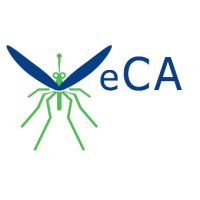
VeCA
Keywords: analysis, cost effectiveness, decision making tool, vector control management, Culex
Learn more...
Full title: “Vector Control Analysis”, VeCA
Project description: The project aims to develop a tool allowing evaluating the efficiency and cost effectiveness of vector control strategies against main vectors of West Nile fever in Europe. The VeCA program is a mechanistic and ecological-driven base application allowing performing the analysis for an ensemble of functioning units and returns the likely impacts of vector control scenarios on:
- The vector (mostly Culex sp) abundance and infection rates as a function of time
- Potential number of human infected cases as a function of time
- Costs of vector control scenarios
The coordinating Institution/person: Dominique J. Bicout (VetAgro Sup, Marcy l’Etoile, France)
Duration of the project: 2016-2019.
Funding source and total amount: European Centre for Diseases Control (ECDC).
Disease and/or vector(s) “group” involved: West Nile fever / Culex sp.
Geographic scopes of the project (geographical area involved, area(s) of study): Europe
Number of countries involved in the project: 6 (Armenia, France, Greece, Italy, Serbia, Netherlands)
Benefit for the scientific community: To provide the community with a decision-making tool to guide the management of vector control
Contact: Dominique J. Bicout
Vectopole Sud
Keywords: research platform, arthropod vectors, crop pests, biology, health, ecology ,environment, evolution, medicine , one health, training
Learn more...
Full title: “Vectopole Sud”
Project description: Vectopole Sud, a network located in Montpellier (France), has four experimental platforms, confined insectariums and associated laboratories working on crop pests and arthropod vectors of pathogens that cause infectious diseases in humans or animals. This network brings together five research partners, (CIRAD, CNRS, INRA, IRD, University of Montpellier) and EID Méditerranée, the main French public mosquito control agency. It conducts research, expertise and training activities at many interfaces between biology and health, ecology and environment, evolution and medicine. Its work combines human, veterinary and plant health, in line with the One Health approach.
Coordinating Institution/person: Annual rotating coordination between CIRAD, CNRS, EID Méditerranée, INRA, IRD, University of Montpellier (Cirad, for 2018).
Project duration: 4 years
Funding source and total amount: European Regional Development Fund (Region “Occitanie” and EU), CIRAD, CNRS, EID Méditerranée, INRA, IRD, University of Montpellier.
Disease and/or vector(s) “group” involved: Aedes, Culex, Tsetse, Ticks, Culicoides, sandflies species, crop pests (Spodoptera frugiperda, spodoptera littoralis, Helicoverpa armigera).
Geographic scopes of the project: Europa, Asia, Africa.
Number of countries involved in the project: one (France), but open to regional and international partnership.
Scientific community benefit: Vectopole Sud contributes to human wellbeing by improving health, by fighting human diseases (public health) and animal diseases (veterinary public health) to ensure more productive, sustainable farming systems (food security).
Contact: contact-vectopole-sud@ird.fr
VectorBiTE RCN
Keywords: abundance, time series, traits, modelling, population dynamics, ecology
Learn more...
Full title: VectorBiTE RCN
Project description: The goal of the Vector Behaviour in Transmission Ecology Research Coordination Network (VectorBiTE RCN) to increase interaction between researchers in the diverse fields studying VBDs, to encourage collection and consolidation of key data, and to encourage development of analytical tools to better understand the role of vector behaviour in transmission ecology.
Coordinating Institution/person: Leah Johnson, Virginia Tech and Lauren Cator, Imperial College London (UK)
Project duration: 2016-2021
Funding source and total amount: EEID (NIH/BBSRC), ~£1 million.
Disease and/or vector(s) “group” involved: all (including vector of plant disease).
Geographic scopes of the project: global.
Number of countries involved in the project: Membership and participation open to all nations.
Scientific community benefit: The goal of the Vector Behaviour in Transmission Ecology Research Coordination Network (VectorBiTE RCN) is to increase interaction between researchers in the diverse fields studying VBDs, to encourage collection and consolidation of key data, and to encourage development of analytical tools to better understand the role of vector behaviour in transmission ecology.
Contact: Dr. Lauren Cator
VEO
VEO – Versatile Emerging infectious disease Observatory
Keywords: Infectious disease, preparedness research, early warning systems, public and environmental health, data mining, citizen science, mosquito-borne diseases, antimicrobial resistance, zoonotic wildlife-borne diseases, disease x
Learn more...
Full title: VEO – Versatile Emerging infectious disease Observatory: Forecasting, nowcasting and tracking in a changing world
Project description: A Versatile Emerging infectious disease Observatory (VEO) will be created for the generation and distribution of high-quality actionable information for evidence-based early warning, risk assessment and monitoring of emerging infectious diseases (EIDs) and antimicrobial resistance (AMR)
Coordinating Institution/person: Erasmus Universitair Medisch Centrum Rotterdam, Marion Koopmans
Project duration: 1 January 2020 to 31 December 2024
Funding source and total amount: European Union’s Horizon 2020 research and innovation programme under grant agreement No. 874735; approximately €15 million
Disease and/or vector(s) “group” involved: COVID-19, arboviruses, and bird-borne zoonotic viruses
Geographic scopes of the project: Europe, and collaborating partners in the global networks for influenza and arboviruses
Number of countries involved in the project: 12 European countries
Scientific community benefit: As a major part of emerging infectious disease and antimicrobial resistance comes from animals, a true shift in ability to detect these would come from a deep understanding of the factors that drive their emergence, focusing on the complex interplay of environmental and human factors that drive disease dynamics. VEO aims to gain those insights focusing on different disease emergence scenarios, and use them to develop early warning systems.
Contact: veo.europe@erasmusmc.nl
WetlandLIFE
Managing mosquitoes and the socio-ecological value of wetlands for wellbeing.
Keywords: mosquito ecology, risk perception, community engagement, ecological management, economic impacts, nuisance biting
Learn more...
Full title: WetlandLIFE – Managing mosquitoes and the socio-ecological value of wetlands for wellbeing
Project description: WetlandLIFE is an interdisciplinary project exploring the ecological, economic, social, cultural and historic values associated with English wetlands, with a focus on the role of mosquitoes – perceived and actual – in shaping these values.
Coordinating Institution/person: Dr Tim Acott (PI), University of Greenwich, UK
Project duration: August 2016 to January 2020
Funding source and total amount: Natural Environment Research Council’s Valuing Nature Programme: Health and Wellbeing, £1,046,026
Disease and/or vector(s) “group” involved: British mosquito species
Geographic scopes of the project: UK
Number of countries involved in the project: One
Scientific community benefit: Providing the evidence base for assessing and managing nuisance biting mosquitoes and anticipating invasive mosquitoes and future disease risk, while demonstrating the diverse benefits of urban, rural and coastal wetlands to people and wildlife.
Contact: Dr. Tim Acott
WIN
Worldwide Insecticide Resistance Network.
Keywords: Aedes mosquitoes, Innovative tools, Insecticide resistance, International network, Public health, Vector control
Learn more...
Full title: “The Worldwide Insecticide resistance Network (WIN)”, A Global partnership to track and combat insecticide resistance in mosquito vectors of arboviruses.
Project description: The WIN supports international efforts aiming at mitigating insecticide resistance in arbovirus vectors. For this purpose, the WIN missions are to i) review evidence, fill knowledge gaps and identify research priorities; ii) collect comparable, representative and accurate IR data for policy decisions; iii) strengthen country capacities for early detection and surveillance and iv) advise decision makers on Insecticide Resistance Management establishment.
Over the past few years, the network has gained international recognition for its role in Aedes mosquitoes resistance and is now entering into a new era by developing a membership open to new academia, public health agencies, international organizations, industries, NGOs, etc.
Coordinating Institution/person: Institut de Recherche pour le Développement (IRD), Dr Vincent Corbel.
Project duration: The WIN was founded in March 2016 in response to a joint call of the WHO special Programme for Research and Training in Tropical Diseases (TDR) and the Department of Neglected Tropical Diseases (NTD) and is now evolving into a membership organization.
Funding source and total amount: WHO special Programme for Research and Training in Tropical Diseases (TDR) and the Department of Neglected Tropical Diseases (NTD) (first financial support).
Disease and/or vector(s) “group” involved: Chikungunya, Dengue, Zika, Yellow fever / Aedes sp.
Geographic scopes of the project: Global network, with membership available to all.
Number of countries involved in the project: The network is based in France at IRD (Montpellier). It currently involves 19 internationally recognized institutions in vector research from 14 countries.
Scientific community benefit: The WIN expects to support basic and applied research, training workshop for public health professionals and conduct expertise activities in vector control with a view to put insecticide resistance back in the vector control agenda and reduce the global burden of vector-borne diseases. Over the past few years, the WIN has brought together the scientific community, on two occasions, by organizing a biennial international conference on insecticide resistance and control strategies for arbovirus and has published several review articles in the field of vector control and resistance management.
Contact: Vincent Corbel and follow the network on twitter @theWIN_network

